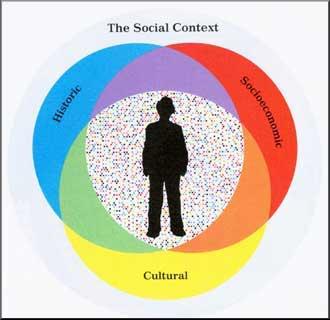In the ever-evolving landscape of cinema, classic films often stand as revered monuments of artistic achievement. Yet, as we delve deeper into the allure of these timeless works, a critical question arises: is nostalgia distorting our perception of their true value? This article seeks to unravel the intricate relationship between nostalgia and the enduring appeal of classic films. By examining how emotional connections and cultural memory influence our judgment, we aim to uncover whether these cinematic treasures are celebrated for their intrinsic merit or if they bask in the warm glow of sentimental reminiscence. Through an analytical lens, we will explore the potential biases nostalgia introduces, challenging the conventional wisdom surrounding these iconic masterpieces.
Understanding the Allure: The Emotional Impact of Nostalgia on Film Appreciation
Nostalgia often acts as a powerful lens through which audiences view classic films, coloring their perception with an emotional resonance that transcends the objective quality of the work. This phenomenon can be attributed to several factors:
- Emotional Connection: Films tied to personal memories evoke feelings of comfort and familiarity, creating a sentimental bond that enhances appreciation.
- Cultural Context: Movies from past decades serve as cultural time capsules, allowing viewers to reconnect with the social and political climate of the era, thus adding layers of meaning.
- Shared Experience: Nostalgia often fosters a communal appreciation, as audiences collectively reminisce about shared cinematic moments.
While nostalgia can deepen one’s love for a film, it also poses the risk of clouding objective evaluation. By elevating emotional ties above critical assessment, nostalgia might obscure the artistic merits or shortcomings inherent in the film itself. Therefore, while it undeniably enriches the viewing experience, it is essential to balance emotional engagement with critical insight to truly appreciate the value of classic films.

Evaluating Cinematic Merit: Separating Artistic Value from Sentimental Attachment
When delving into the realm of classic cinema, it’s crucial to distinguish between a film’s artistic merit and the warm glow of nostalgia that often envelops our memories. Many films that are heralded as classics owe their enduring popularity to the emotional connections they forged with audiences at the time of their release. However, to truly evaluate their worth, one must look beyond personal sentimentality and examine the film’s technical and narrative prowess.
- Cinematography and Visual Innovation: Did the film break new ground in terms of visual storytelling?
- Script and Dialogue: Are the themes and dialogues still resonant and impactful today?
- Performance and Direction: Do the performances and directorial choices withstand the test of time?
By focusing on these elements, we can appreciate a film’s contribution to the art form, rather than just the personal memories it evokes. This approach ensures that we celebrate films for their true cinematic achievements, rather than simply for the nostalgia they inspire.

The Role of Cultural Context: How Time Shapes Our Perception of Classics
Understanding the enduring appeal of classic films often requires us to examine the cultural context in which they were created. These movies are not merely products of their time but reflections of the societal values, norms, and challenges of their era. As the years pass, the lens through which we view these films can become clouded by nostalgia, leading us to overlook both their historical significance and the ways in which they might not align with contemporary values.
- Historical Significance: Many classics were groundbreaking at the time of their release, introducing innovative storytelling techniques or addressing taboo subjects.
- Changing Norms: What was once acceptable or revolutionary may now be seen as outdated or problematic, prompting us to re-evaluate these films critically.
- Nostalgia vs. Reality: The warm glow of nostalgia can sometimes obscure a film’s flaws or the aspects that have not aged well.
By acknowledging the influence of cultural context, we can better appreciate the complexities of these films, celebrating their contributions while also engaging in a critical dialogue about their place in today’s world.

Balancing Emotion and Critique: Strategies for Objective Film Analysis
When analyzing classic films, it’s crucial to navigate the intricate dance between emotional attachment and critical assessment. Nostalgia can often act as a comforting lens, coloring our perception with fond memories and personal connections. However, to appreciate a film’s true artistic merit, we must cultivate strategies that allow us to view it with both heart and mind.
- Acknowledge Emotional Bias: Recognize your own emotional connections to a film. Identifying these biases can help in setting them aside during analysis.
- Historical Context: Consider the era in which the film was made. Understanding its cultural and historical backdrop can provide insight into its thematic and stylistic choices.
- Comparative Analysis: Compare the film to others from the same genre or period. This can highlight its unique contributions or shortcomings.
- Technical Examination: Focus on the technical aspects—cinematography, sound design, and direction. An objective look at these elements can often reveal a film’s true value beyond nostalgic impressions.
By balancing emotion with critique, we can appreciate classic films for what they truly are—cultural artifacts that resonate both personally and universally.

